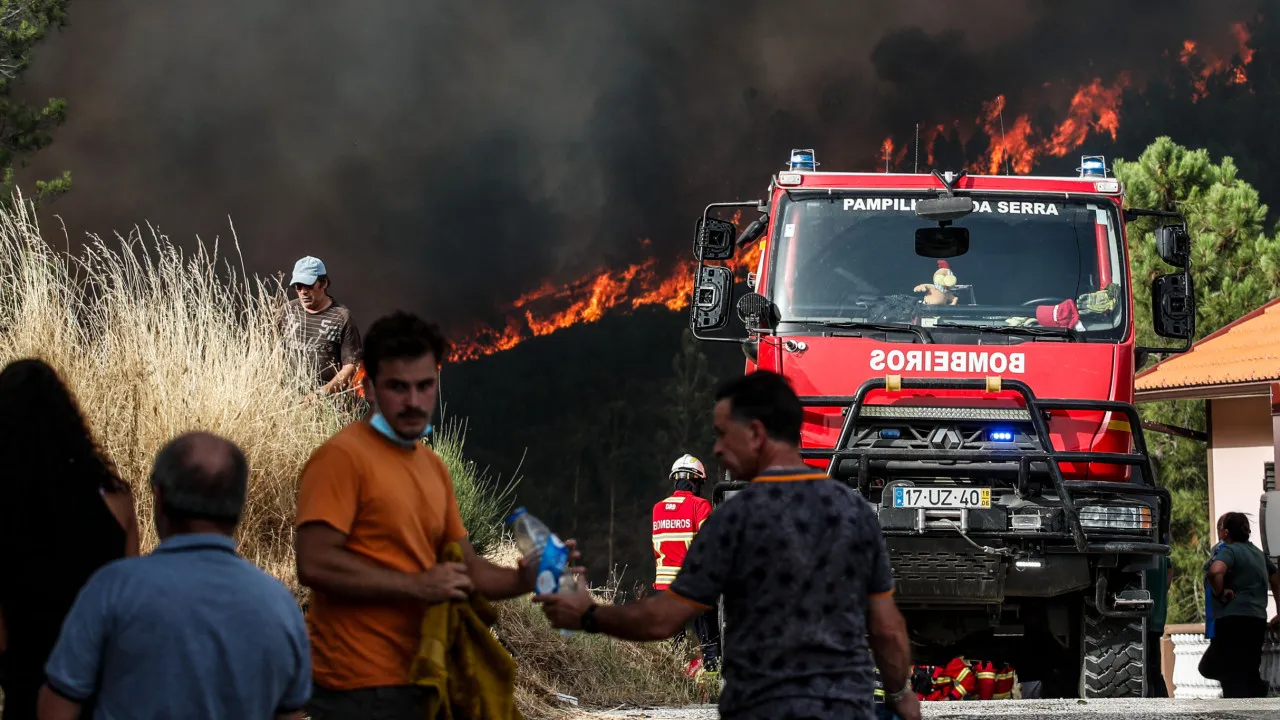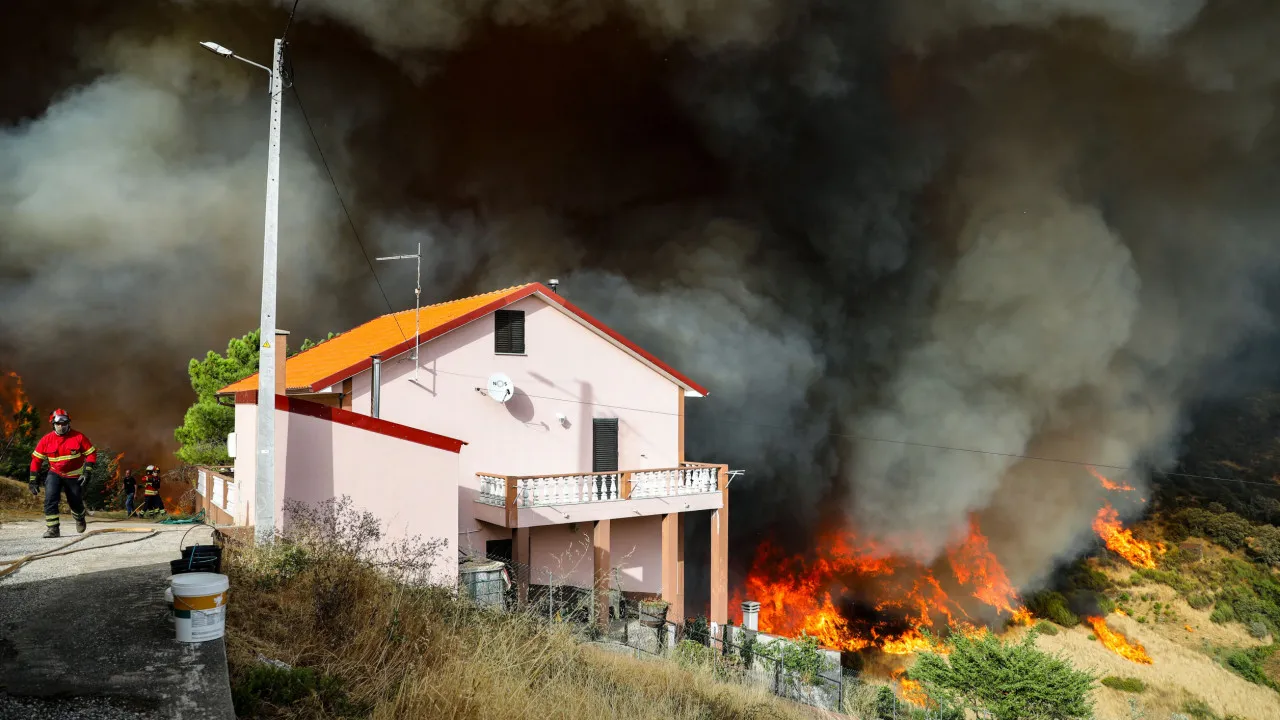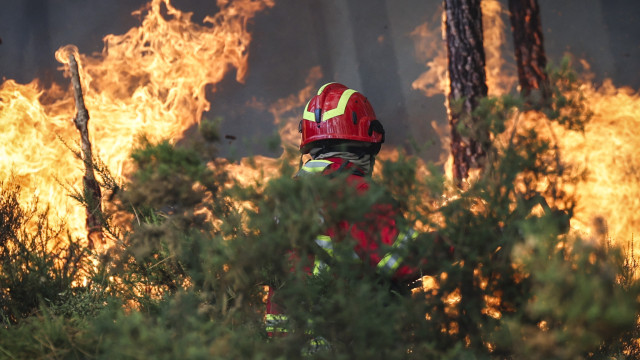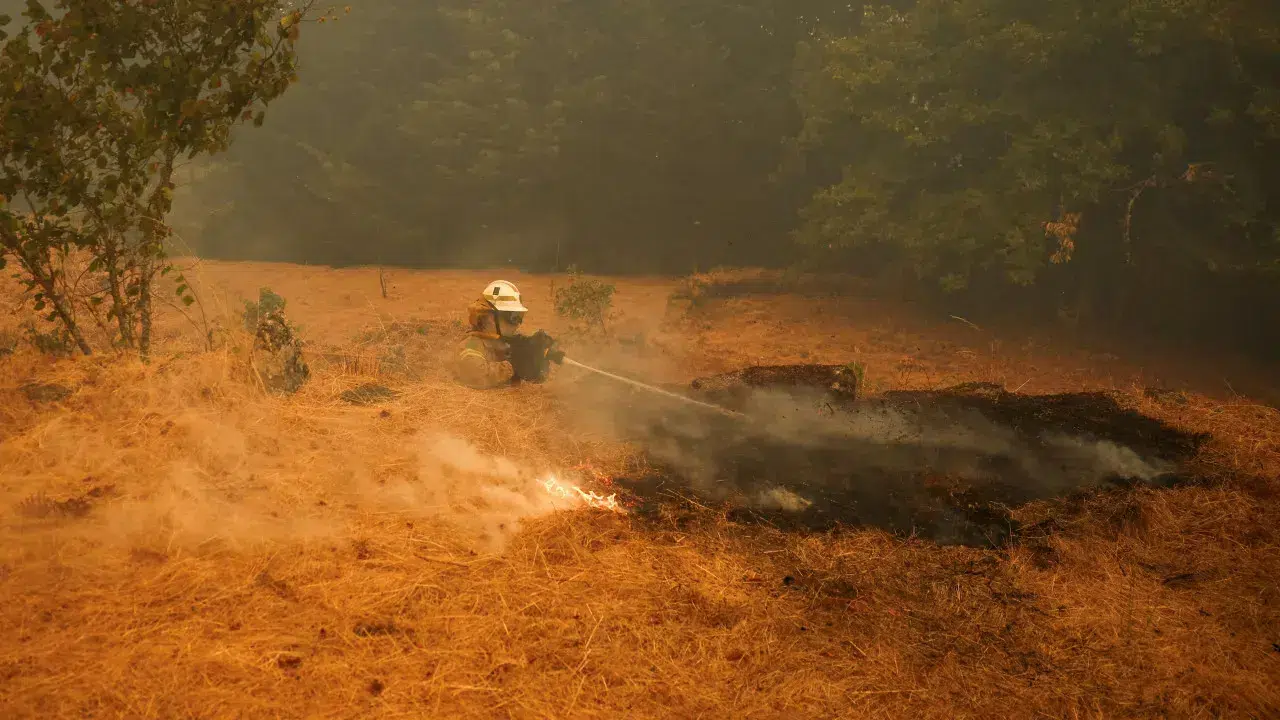
Around 18:30 today, Hugo, a native of Meãs, observed that “the wind and vegetation” surrounding the village exacerbated the flames, which quickly descended a slope after burning nearby for the past 48 hours.
“The fire arrived here with great force. We have many firefighters, and we are doing our best to help [combat the flames],” he stated.
Hugo further described how Meãs was home to about 300 people, including regular residents and those who return during the summer. “[The village] has already been evacuated; those who wanted to leave have left, and those who wanted to stay are here. We will help defend our belongings,” he affirmed.
The fire near Meãs spiraled out of control around 17:00 today, descending the slope, but was halted by firefighters and locals at the top of the village, preventing it from reaching the first houses, as noted by Lusa’s report on site.
The flames eventually moved laterally, advancing swiftly through the forest, while multiple people and operatives, supported by two helicopters, worked to safeguard the village’s urban core.
Mr. Barata, a resident of Coimbra vacationing in the village where his parents hail from, remarked that the village was “surrounded on one side.”
“It lingered at the top of the mountain for two days. Due to the number of fires, there was no chance for many firefighters to come here. Today, with changing winds, it accelerated in an overwhelming fashion, with whirls and many projections,” he illustrated.
“It’s distressing to see everything burning so close to the village,” he added.
However, this was not the first time Barata witnessed the fire so fiercely close to Meãs. He referred to the fire of 2005 (originating in Loriga, in the Guarda district, spreading to Arganil through Piódão and reaching Pampilhosa da Serra), as well as the catastrophic fires of October 2017, which reduced the Central Interior to ashes, alongside other minor ones over the years.
“Unfortunately, fires here are almost an everyday occurrence,” he lamented.
The fire front burning in Unhais-o-Velho’s parish originated from a fire that broke out in Arganil on Wednesday, extending to the municipalities of Oliveira do Hospital, Seia, and Covilhã.
According to the National Emergency and Civil Protection Authority, by 19:30, a total of 980 operatives, supported by 332 vehicles and six aerial means, were combating the Arganil fire.
Mainland Portugal has been affected by multiple rural fires since July, particularly in the North and Central regions, amid high temperatures that prompted the declaration of a state of alert, effective until Tuesday.
The fires caused one death and several injuries, mostly not serious, and partially or entirely destroyed primary and secondary residences, as well as agricultural and livestock operations and forested areas.
Portugal activated the European Civil Protection Mechanism, under which two Fire Boss planes are expected to arrive on Monday to bolster the firefighting efforts.
According to provisional official data, as of August 16, 139,000 hectares have burned in the country, 17 times more than in the same period in 2024. Nearly half of this area was consumed in just two days this week.




